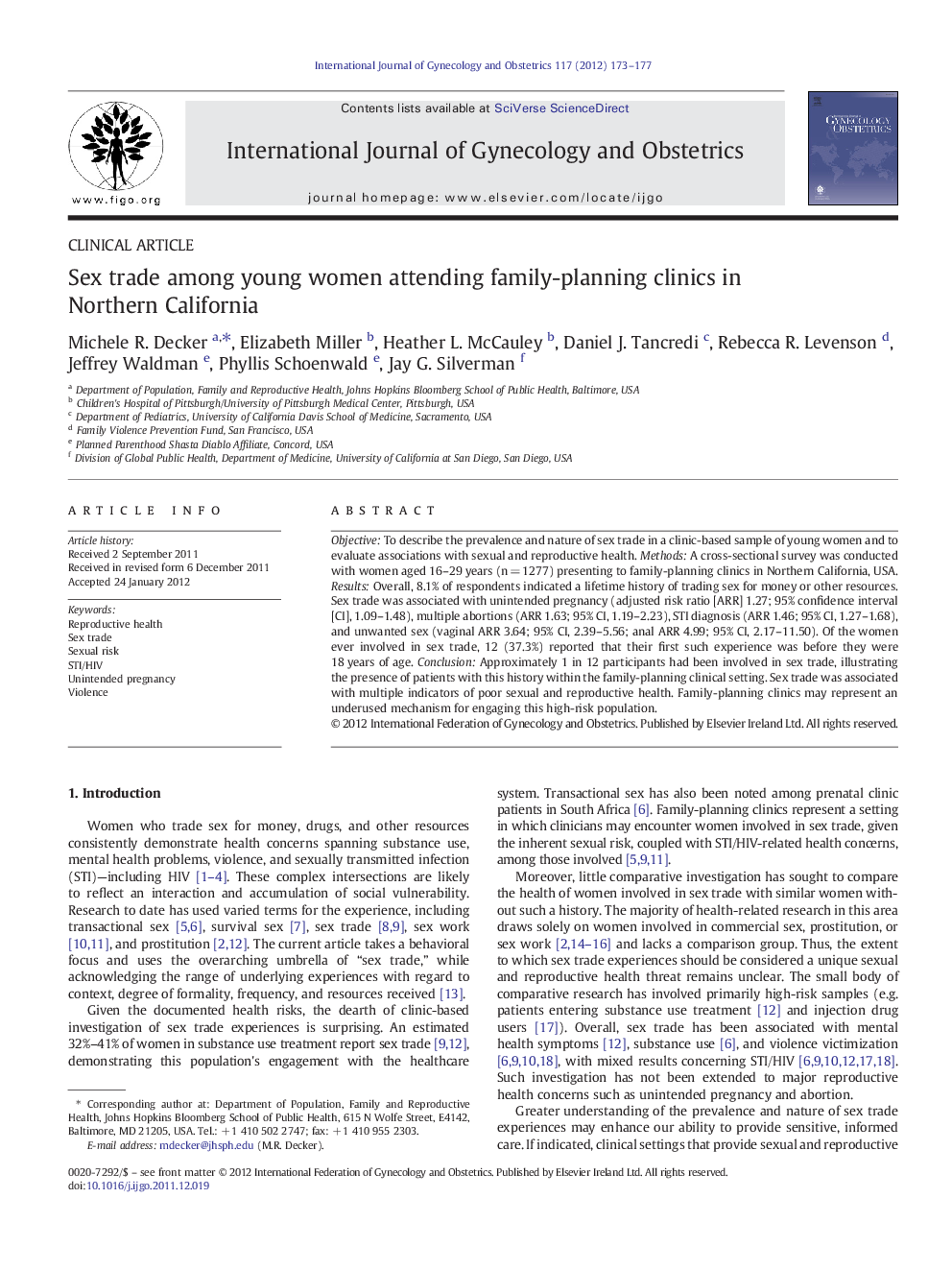| Article ID | Journal | Published Year | Pages | File Type |
|---|---|---|---|---|
| 3949183 | International Journal of Gynecology & Obstetrics | 2012 | 5 Pages |
ObjectiveTo describe the prevalence and nature of sex trade in a clinic-based sample of young women and to evaluate associations with sexual and reproductive health.MethodsA cross-sectional survey was conducted with women aged 16–29 years (n = 1277) presenting to family-planning clinics in Northern California, USA.ResultsOverall, 8.1% of respondents indicated a lifetime history of trading sex for money or other resources. Sex trade was associated with unintended pregnancy (adjusted risk ratio [ARR] 1.27; 95% confidence interval [CI], 1.09–1.48), multiple abortions (ARR 1.63; 95% CI, 1.19–2.23), STI diagnosis (ARR 1.46; 95% CI, 1.27–1.68), and unwanted sex (vaginal ARR 3.64; 95% CI, 2.39–5.56; anal ARR 4.99; 95% CI, 2.17–11.50). Of the women ever involved in sex trade, 12 (37.3%) reported that their first such experience was before they were 18 years of age.ConclusionApproximately 1 in 12 participants had been involved in sex trade, illustrating the presence of patients with this history within the family-planning clinical setting. Sex trade was associated with multiple indicators of poor sexual and reproductive health. Family-planning clinics may represent an underused mechanism for engaging this high-risk population.
